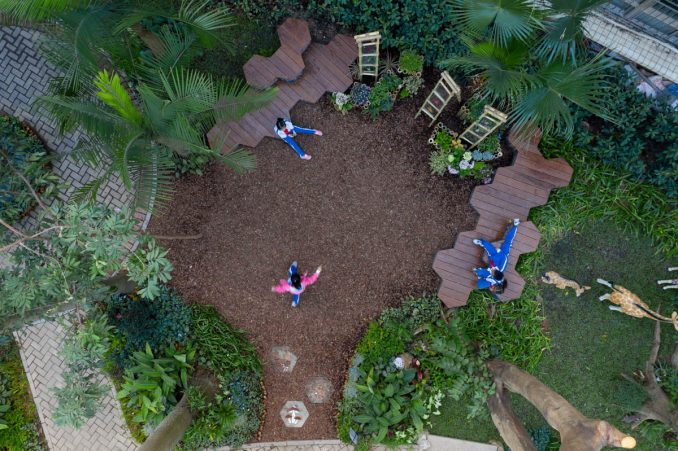
In 2021, with the overall planning of relevant departments in Nanshan District and the participation of a series of social organizations, the action plan “Flowering Nanshan” Nanshan District Community is officially released, and the whole society is now recruiting designers with ideals for the community to build gardens together.
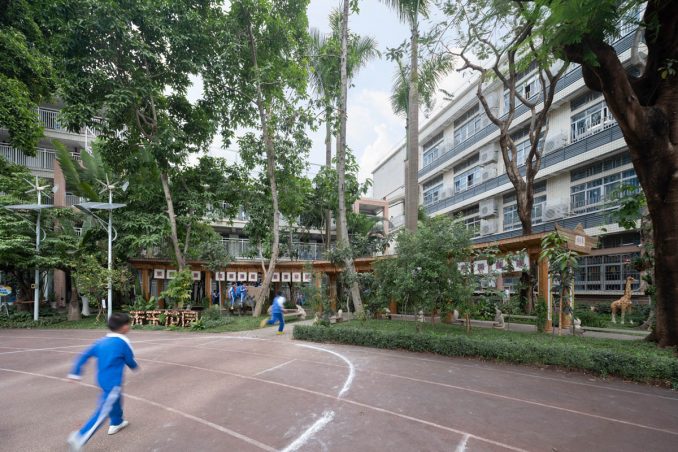
Habitat Creation, Garden As Medium
In the new book “Pro-Nature Cities in the Urban Century”, co-authored with Tim Beatley of the University of Virginia, The Nature Conservancy’s (TNC) Chief Scientist for Global Cities, Rob McDonald argues that nature is most needed in cities when economies are most prosperous, and the great significance of the community garden project is not only to provide residents with a space for intimate interaction with nature, but also offer an opportunity for the public to participate in the protection of urban biodiversity.
The landscape design for the Future Garden adheres to the core concept of co-creation-co-construction-symbiosis under the joint efforts of multiple parties. Combining ecologically adaptive landscape design, diverse functional requirements, users’ demands, and the sustainability of future operations, we constructed a rich landscape layout based on ecology, re-energize the site, and promote friendship between human and nature, which has provided teachers and students with more opportunities to feel and experience nature.
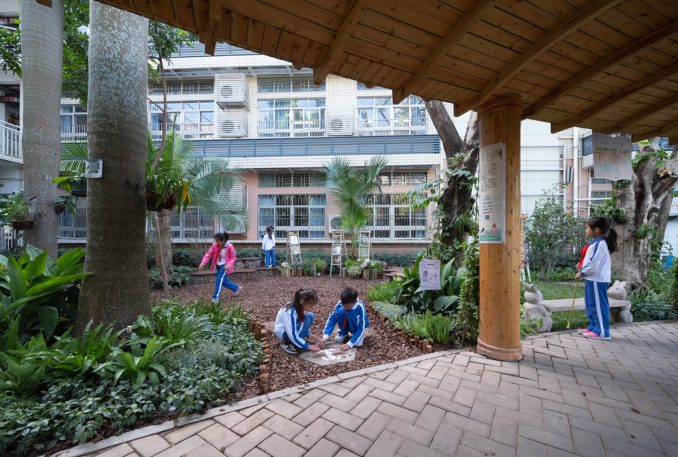
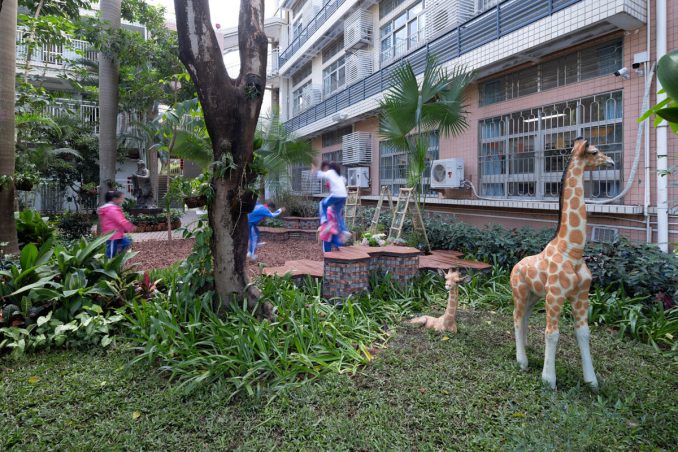
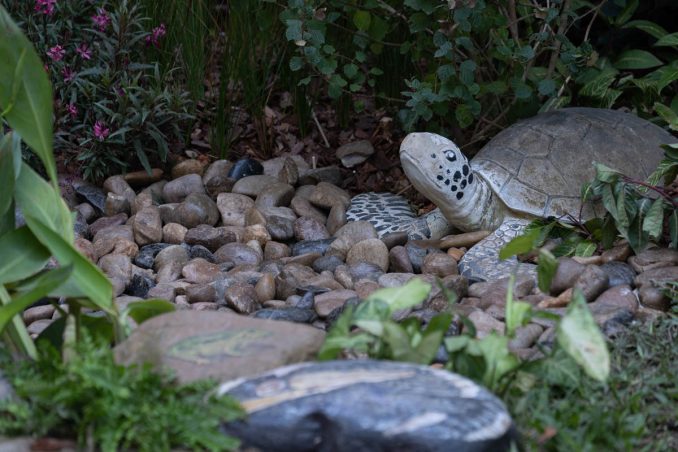
Co-Building & Symbiosis
Upholding the core concepts of co-building and symbiosis, the project was conducted as a PBL (Project-based Learning) practice, with primary school students acting as the main body and the construction unit & professional students serving as a volunteer team. It intends to guide pupils to understand designs based on a series of workshops, stimulate students’ initiative and creativity, and motivate them to participate in building an ideal garden.
Throughout the project cycle, we would like to thank Nanshan Urban Management Bureau and Houhai Primary School for their financial support. Also, we are thankful for the organization of TNC, Shenzhen Green Fund Association, Shekou Foundation, and Shenzhen Urban Design Promotion Center. Meanwhile, we are grateful for the technical support from the College of Forestry and Landscape Architecture of South China Agricultural University and the trees and construction materials given by the Jinxiu Green Industry. Last but not least, we want to thank the teaching faculty and students of Houhai Primary School for their time and efforts in this project.
Roundtable Discussion on building a garden
Children are the most important owners of this garden. GND has always believed that every child is an endless treasure. They have novel, free and bold ideas, as well as their own unique viewpoints and thinking. In order not to miss these precious treasures, we walked into the brigade of Houhai Primary School and held a “round-table discussion” with the children in the form of “thinking, discussion, and voice” about building a garden together, and asked the children to present their ideas in the form of post-it notes as the hosts.
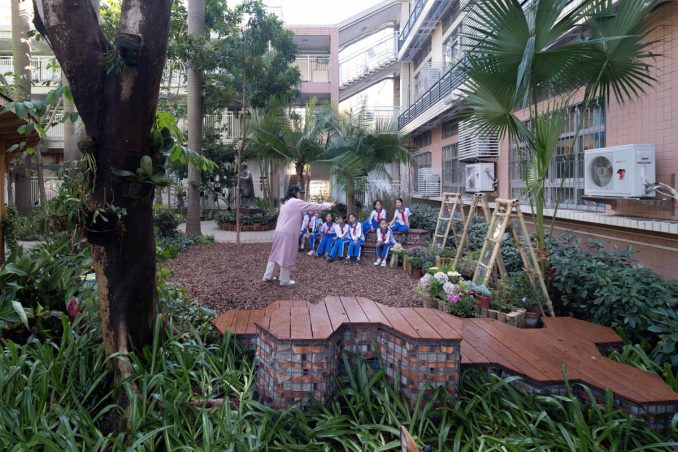
Making of regeneration bricks
In the second co-building workshop of the “Plan for Future Designers”, we carried out this activity centered on environmental protection · rebirth · reconstruction. The students of Linfeng College were invited to teach environmentally-friendly regeneration bricks and guide students to change from users to creators. Little future designers (students of Houhai Primary School), would-be designers (the teachers and students from the Forestry and Landscape Architecture College of South China Agricultural University), and current designers (GND’s partners) jointly made six regeneration bricks, which were named Spring Forest with Kingfishers1, Spring Forest with Kingfishers 2, Mushrooms and Snails, I Am a Pot of Flowers, iDEER Eddie, and A
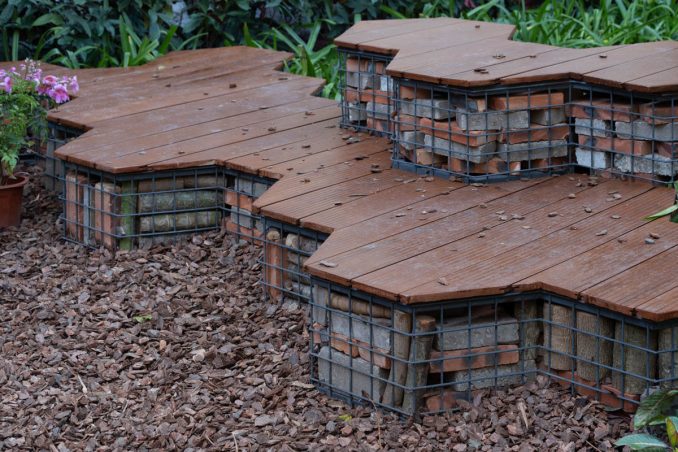
Renewable logos
The “Plan for Future Designers” workshop enabled students to participate in planting activities and the making of renewable logos. By observing each planting procedure, students learned simple working technology, saw changes in plants’ growth, and personally experienced the fun of operation and the joy of success. Subsequent follow-up, observation, and records urge students to pay more attention to the process of scientific explorations and changes in things, as well as foster the attitudes of practical, rigorous, and detailed learning.
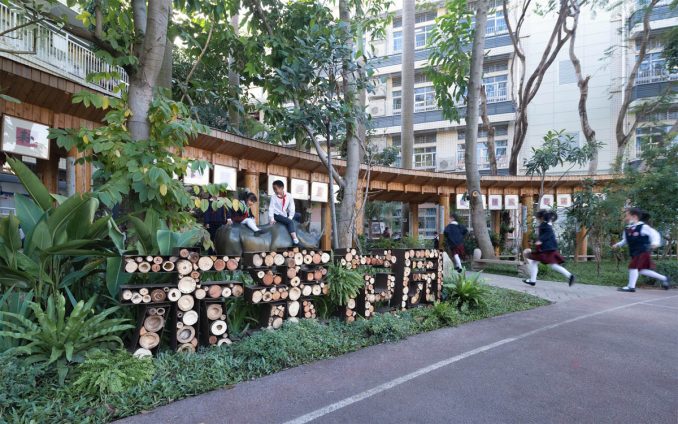
Bamboo framework
Students from the Forestry and Landscape Architecture College of South China Agricultural University started once again, making bamboo strips and frames on the site. Although it was an unofficial construction studio, it attracted pupils who passed by to join. College students collected plants on the site and made plant specimens on the bamboo frame with transparent acrylic plates. These specimens can be used as teaching props and decorations to create vitality and interest.
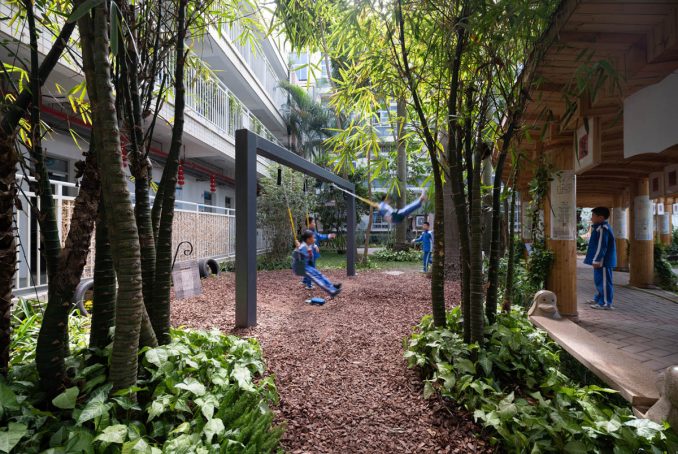
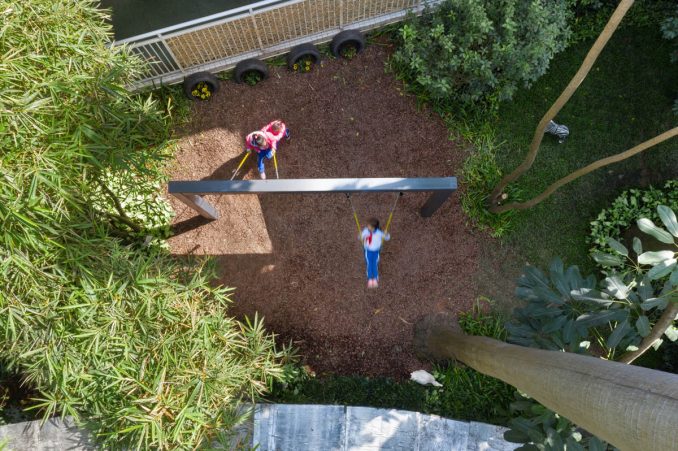
Future Garden of Houhai Primary School
Organizer and Sponsor: Nanshan District Urban Management and Comprehensive Law Enforcement Bureau
Co-organized by: GND Jiedi Landscape Design, Shenzhen Green Fund Association, The Nature Conservancy (TNC), Shekou Community Foundation
Supported by: Houhai Primary School, South China Agricultural University丨College of Forestry and Landscape Architecture
Design Execution: GND Jiedi Landscape-Shenzhen Jiedi Landscape Planning and Design Co., Ltd.
Project Address: Shenzhen, Guangdong – Houhai Primary School Affiliated to Shenzhen University
Chief Designer: Qiu Ge, Yue Xue
Concept design: Luo Feng, Yang Ke
Garden construction design: Dai Jianli, Li Dongmei
Plant Design: Zeng Fengling
Teacher-student team: Lin Yiying, Li Jian, Hu Zhijie, Luo Jiaqi (mentor team). Xu Xiang, Zheng Zhide, Ye Tiantian, Wu Siyan, Huang Yang, Luo Wanqing, Ru Zhiying (student team).
Landscape construction: Shenzhen Jingxiulvye Landscaping Engineering Co., Ltd
Photography: Zeng Tianpei
